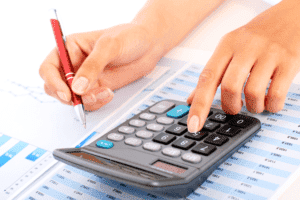
If a customer pays with PayPal retained earnings for a retailer’s product, the respective amount is credited to the retailer’s PayPal account. You should note, that at first the money is held in this virtual account, and not automatically credited to the seller’s bank account. To use PayPal to transfer money, customer and retailer must be registered with an email address.
What are the costs for sellers?

In this comprehensive guide, we will walk you through the step-by-step process of setting up accounting for paypal transactions PayPal in QuickBooks, recording PayPal transactions, and reconciling them seamlessly. By synchronizing transaction data, you can effectively manage your accounts and maintain an accurate view of your financial health. PayPal’s integrations and automation features are designed to help transform how you manage your accounting and business operations. By facilitating electronic payments that seamlessly integrate with your accounting software, PayPal helps your financial data flow efficiently without manual input, helping you reduce errors and save time. Use Synder accounting for PayPal transactions and store them in one safe space automatically.

Retailer Survey on Cashless Payments in Switzerland: The Main Results!
First of all, you want to set up the default payment to either be from a credit card or bank balance and not the PayPal balance. If you have any expenses that are paid directly from the PayPal balance, it makes the bookkeeping https://www.bookstime.com/ so much more complicated. You’ll also want to set up the auto transfer to transfer the balance in PayPal to the bank account every day.
- This not only speeds up the payment process, it also has implications for the accounting of PayPal payments.
- Leverage our accounting tools and industry leadership to set up, manage, and streamline business transactions to help…
- Geolocation data, however, pinpoints the exact location of a sale, ensuring that the correct sales tax is applied based on the specific jurisdiction.
- Matching transactions in QuickBooks to PayPal statements is a critical step to ensure the accuracy and completeness of your financial records.
- Paying attention to these details not only aids in maintaining transparency and compliance but also promotes sound financial health for your business.
- It’s taking things to the next level – no matter how scary it might seem – that will get you where you want to go.
Recording PayPal Transactions in QuickBooks
Recording PayPal sales in QuickBooks involves capturing and categorizing all income generated through PayPal transactions to ensure comprehensive financial records. This integration streamlines the recording of transactions, reducing manual data entry and minimizing errors. The process involves accessing the QuickBooks Online account, navigating to the Gear icon, selecting Account and Settings, then choosing the Payments tab to connect PayPal.

Matching Transactions in QuickBooks to PayPal Statements
You already have the necessary accounting records and there’s no onus on you to record all of these details twice. PayPal for Business makes it simple and secure to accept payments and grow your business. With the ability to accept a wide variety of online payments with ease, PayPal lets you offer a seamless checkout experience to customers around the world. Any money paid via paypal from the normal bank account would just show up as a payment from the paypal account with a corresponding bank transfer from the current account to the paypal account.